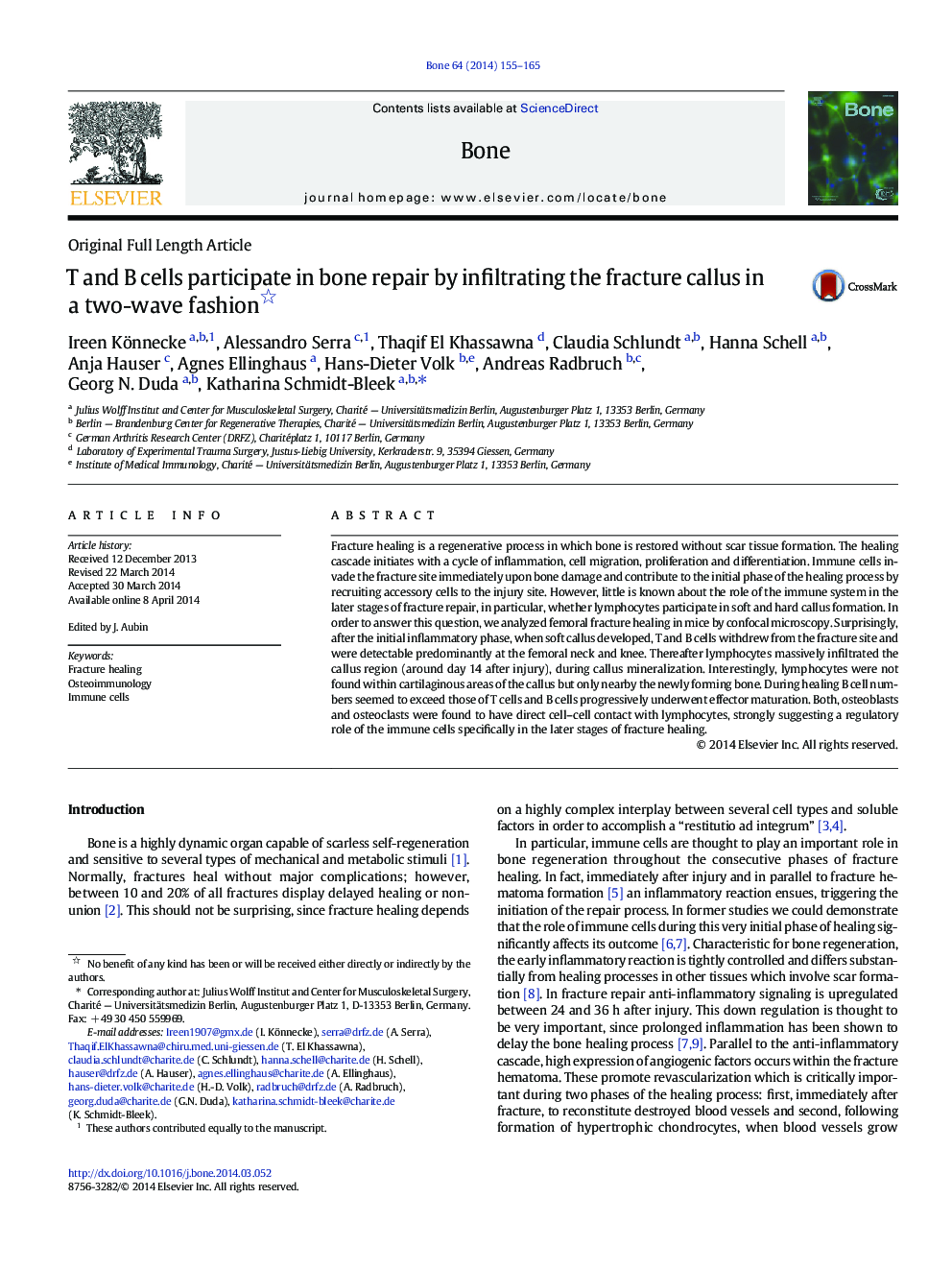| کد مقاله | کد نشریه | سال انتشار | مقاله انگلیسی | نسخه تمام متن |
|---|---|---|---|---|
| 5890062 | 1568155 | 2014 | 11 صفحه PDF | دانلود رایگان |

- We analyzed the immune cell distribution during fracture healing in a mouse osteotomy model.
- T and B cells appear in two waves during the consecutive steps of the regenerative bone healing process.
- B cells constitute the majority of lymphocytes participating in bone healing.
- We clearly visualized T and B cells in direct cell-cell-contact with osteoblasts and osteoclasts.
- Remodeling phase of healing correlated with appearance of high OPG producing plasma cells in the callus.
Fracture healing is a regenerative process in which bone is restored without scar tissue formation. The healing cascade initiates with a cycle of inflammation, cell migration, proliferation and differentiation. Immune cells invade the fracture site immediately upon bone damage and contribute to the initial phase of the healing process by recruiting accessory cells to the injury site. However, little is known about the role of the immune system in the later stages of fracture repair, in particular, whether lymphocytes participate in soft and hard callus formation. In order to answer this question, we analyzed femoral fracture healing in mice by confocal microscopy. Surprisingly, after the initial inflammatory phase, when soft callus developed, T and B cells withdrew from the fracture site and were detectable predominantly at the femoral neck and knee. Thereafter lymphocytes massively infiltrated the callus region (around day 14 after injury), during callus mineralization. Interestingly, lymphocytes were not found within cartilaginous areas of the callus but only nearby the newly forming bone. During healing B cell numbers seemed to exceed those of T cells and B cells progressively underwent effector maturation. Both, osteoblasts and osteoclasts were found to have direct cell-cell contact with lymphocytes, strongly suggesting a regulatory role of the immune cells specifically in the later stages of fracture healing.
Journal: Bone - Volume 64, July 2014, Pages 155-165